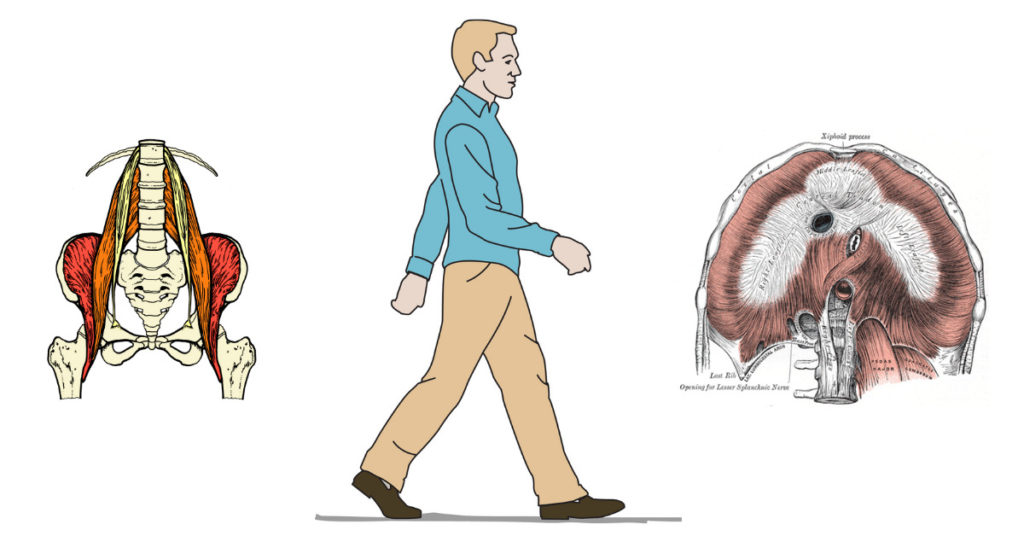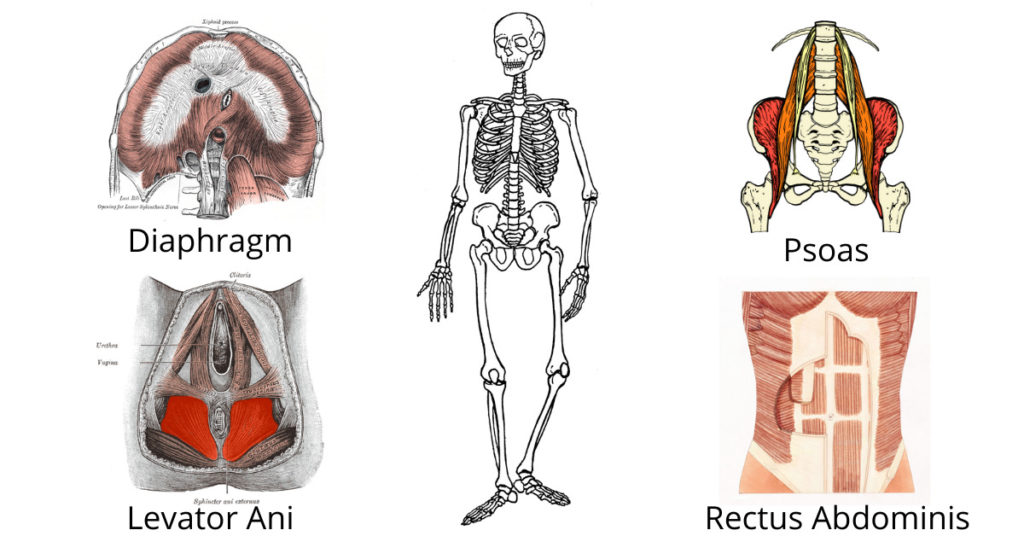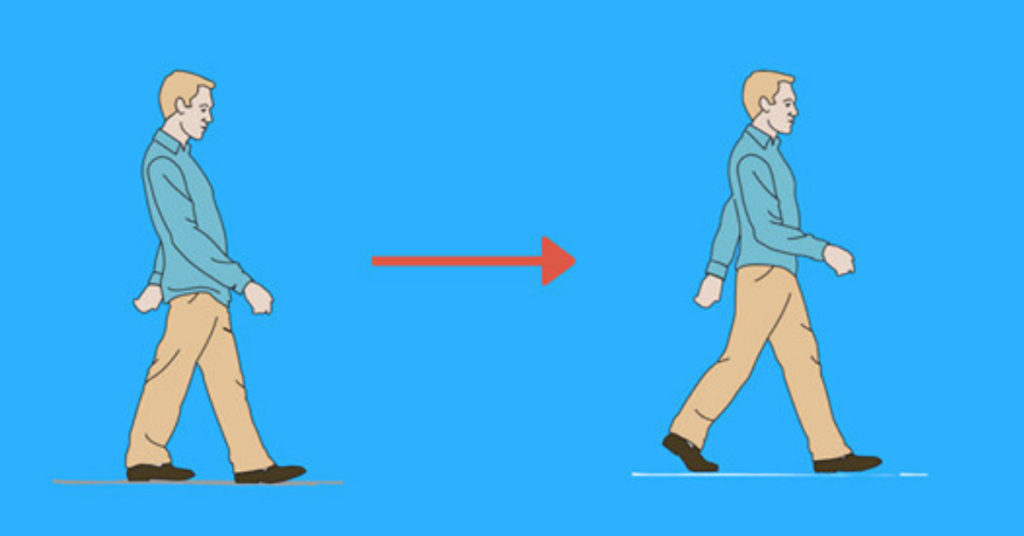The Psoas and Diaphragm: Building the Abdominal Box
 The psoas and diaphragm are partners in walking and breathing and we need them to work together.
The psoas and diaphragm are partners in walking and breathing and we need them to work together.
I’ll get to walking but first…
We can look at the trunk as a rectangular box with four sides. The abdominal box.
- The top is the diaphragm.
- The bottom is the levator ani, or pelvic floor.
- The back of the box is the psoas muscle.
- The front of the box is the rectus abdominis and other abdominal muscles.
Let’s explore the walls of the box.
The diaphragm, a dome-shaped muscle at the bottom of the ribcage, is the most important muscle of breathing.
With every breath we take the diaphragm should descend. This tones and massages the contents of the trunk between the base of the ribs and the top of the pelvis.
The psoas muscle is a key factor in every successful step we take. The psoas muscle originates on the bottom vertebrae of the thoracic spine and on the top four vertebrae of the lumbar spine.
It moves down across the front rim of the pelvis and then moves back to insert onto the back half of the inner thigh.
As one of the body’s main flexors, and one of only three muscles that connect the lower and upper body, the psoas is largely responsible for initiating each successful step we take.
At the base of the pelvis, the levator ani supports the weight of the organs and helps control elimination.
The rectus abdominis runs from the front of the pelvis to the rib cage and sternum directly across from the psoas.
These four sets of muscles essentially house the contents of the abdomen.
Their placement and tone go a long way to determining the efficacy of many of our essential functions.
Posture And the Abdominal Box.
 There are an endless array of reciprocal relationships in the body.
There are an endless array of reciprocal relationships in the body.
Some muscles oppose each other in order to act. As an example, for the bicep to lengthen, the tricep has to shorten.
Other muscles seem to act in concert.
The pelvic floor and the diaphragm have one of these relationships.
With good posture, these two structures are level and move in a similar way.
On each inhalation, the diaphragm and pelvic floor should lower, and with each exhalation, they rise back up.
You can feel that though it can be very subtle. In fact, you can use that feeling to find your best posture.
- Stand up with your eyes closed and your feet fairly close together.
- Assume what you think is good posture.
- Feel what happens internally when you breathe.
If you don’t sense the diaphragm and pelvic floor moving together try changing your posture until you do.
If you do sense the diaphragm and pelvic floor moving together, that is an improvement in your current posture. I promise you.
This balance is countered by the front and back relationship of the psoas and the rectus abdominis.
When the diaphragm drops as it should on the inhale, there is less space in the abdominal box.
To compensate for this the psoas settles backward into the bowl of the pelvis, and the abdominal muscles move forward.
Exhaling brings everything back to where it began.
If all of this happens, every breath we take tones, massages, and stimulates everything between the diaphragm and the base of the pelvis.
Your kidneys live on either side of the psoas. The abdominal aorta (blood flow) moves through the diaphragm and splits into two arteries that follow the path of the psoas into the leg.
The bladder and reproductive organs sit in front of the psoas and the stomach and intestines plug into the middle of all this.
The large intestine wraps around the small intestine, under the diaphragm, and in front of the psoas, along the path of the side body.
Every Step Involves the Psoas and Diaphragm
 And when you walk well all of this comes together.
And when you walk well all of this comes together.
With every step you take, a whole host of muscles spring into action.
The psoas is drawn down and back through the inner thigh. As that leg extends backward the pelvis tilts back and the lumbar spine is pulled forward.
Your rectus abdominis counters that while other abdominal muscles get involved to aid in the natural rotation that moves naturally up through the spine.
As you switch legs the same thing happens on the other side of the body creating a continual rotation through the spine initiated by the psoas.
Imagine a washing machine and how it wrings dirt out of your clothes as it works through the wash cycle.
When the legs, pelvis, and spine move in harmony with your core muscles, this same action is created in your trunk.
The organs all move and a healthy tone settles into organs that are never stagnant.
The body is meant to be a self-healing machine. The relationship of the psoas and diaphragm is key to making that happen.
The psoas is the walking muscle and the diaphragm is the breathing muscle but…
When things are going well every step you take is connected to the diaphragm. And every breath your take is connected to the psoas.
Putting all of this together with good posture and movement patterns are some of the many keys to aging gracefully.
***
